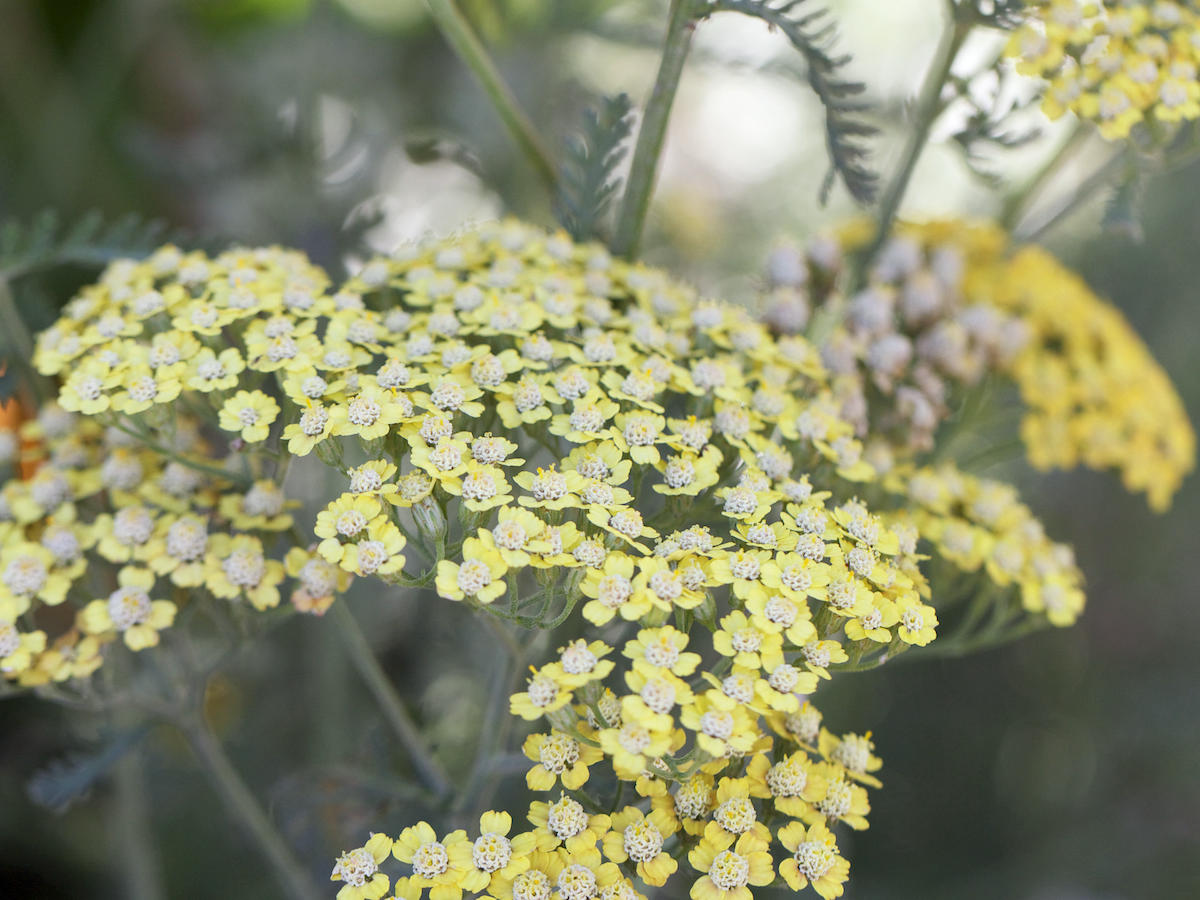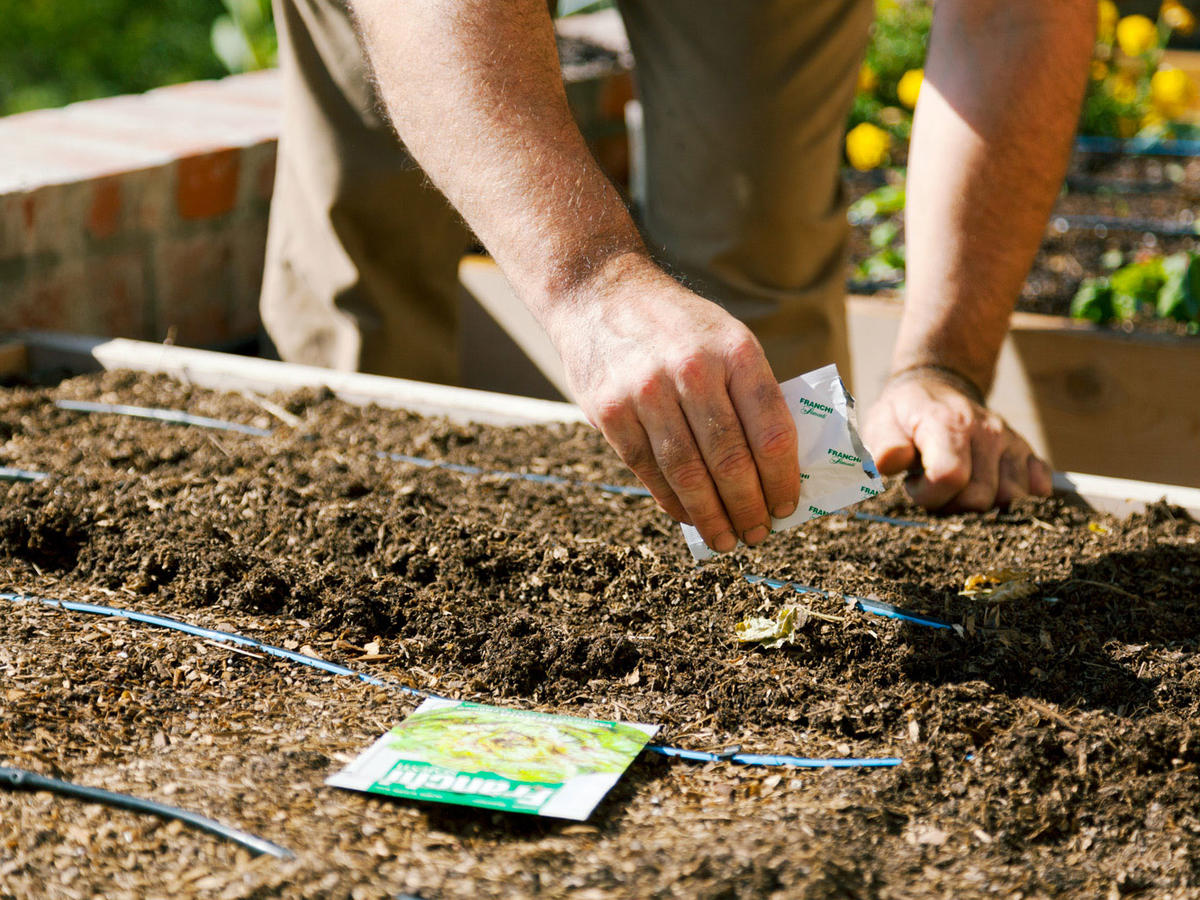
5 Cool-Season Natives That You Should Plant Right Now
Sowing these plants by seed is an easy, budget-friendly way to add stabilization and sustainability into your landscape.

Growing plants from seeds is one of the most rewarding things a gardener can do—it’s like watching the magic of life unfold right before your eyes. Hedgerow Farms, a native seed farm with 35 years of expertise, has mastered the art of cultivating and preserving wildflowers and grasses unique to our western region. So when it comes to native annuals, they understand why seeds are hands-down the best way to go. Not only do you avoid the risk of transplant shock, which mature plants are prone to due to their deep taproots, but also starting from seed, especially for perennials, means healthier, stronger root systems—not to mention they are a much more affordable solution, especially if you’re looking to cover a lot of ground. Here, Julia Michaels, Ph.D., a restoration ecologist at Hedgerow Farms, shares which native seeds you should be sowing during the start of the cooler season along with some tips for sprouting success.
Top 5 Native Seed Mixes to Try This Fall
1. Annual Wildflower Mix

Beth Savidge
Many of California’s most beautiful native wildflowers are annuals that bloom in the spring and early summer. To get those beautiful pops of color, start your annuals in late fall or early winter. Species such as lupines, Clarkia, goldfields, poppies, Phacelia, baby blue eyes, and native sunflowers perform best when sowed from seed, as they tend to send down taproots. A well-formed taproot allows the plant to access deeper water sources in the soil, providing better drought tolerance, anchoring the plant firmly in the ground, and enabling it to absorb nutrients from deeper soil layers. Wildflowers tend to be prolific seed makers, so be sure to let blooms produce seed and drop before deadheading to allow reblooming year after year.
2. Lawn Replacement Mix

Beth Savidge
Native fescues such as Festuca idahoensis, Festuca occidentalis, and Festuca rubra make a beautiful lawn replacement that creates a meadow-like appearance. While Agrostis pallens (bentgrass) can be mowed short just like a regular lawn, if you’re looking for a wilder meadow look, mix in some meadow barley seed (Hordeum brachyantherum) for some lacy height. Purple needlegrass (Stipa pulchra) is also a lovely meadow addition, but we advise that it is not the best fit for homes with pets due to its spiky seeds.
3. Erosion Control Mix

Beth Savidge
Got a slippery slope that you would like to stabilize? Native grasses have deep roots and can be a great long-term solution. If you want to create stability near a stream bank or an area with lots of water, Elymus triticoides (creeping wild rye) will grow quickly and provide incredible habitat for birds while showing off its beautiful blue color. For dryer slopes, start with hardy bunchgrasses such as California brome (Bromus californicus), California meadow barley (Hordeum brachyantherum ssp. californicum), and blue wildrye (Elymus glaucus).
4. Late Bloomer Mix

Rachel Weill
Seeding late-blooming perennials is more of a long game. Most forget all about them (or where they were sown) until germination begins later in the spring. Think of this like leaving your future self a present rooted in resilience. Try gumplant, California aster, Madia, and yarrow, which each hold up against the late summer heat, providing important habitat for native pollinators. Late-blooming flowers are a must-have for any garden that supports migrating songbirds and insects gearing up for winter. As the season winds down, these plants offer a last chance for food before cooler weather rolls in.
5. Milkweed

Annie Otzen/Getty Images
Protecting monarch butterflies is more important than ever, and the actions of every gardener count! If you are new to planting milkweed seed, start with the narrowleaf variety (Asclepias fascicularis) because it is the easiest to grow from seed. These seeds benefit from stratification, where spending a winter outside in the soil, exposed to cold temperatures promotes germination. Sow the seeds now and you will see germination beginning in the spring, and blooms appearing in late summer. To entice monarchs, make sure to sow a nice dense patch with several milkweed plants along with other nectar rich blooms, so that it is easier for the monarchs to find their host plants. You’ll also be providing essential food for future larvae and adults alike.
Planting, Cultivation, and Ongoing Care

Reed Davis
When it comes to successful germination, the main goal is to maximize seed-to-soil contact. If you’re working with compacted soil, it’s worth spending time raking the top 1/2 inch to loosen and make the sowing area crumbly. During this time, it’s imperative to remove any weeds; this will not only aid in insuring less nutrient competition for your sprouting plants, but it will also make it easier for you to identify your newly emerging natives.
Moisten soil before scattering your mix, spread the seed, and gently tamp down earth for full seed-to-soil contact, making sure no more than 1/4 inch of soil is covering your seed mixture. Be sure to keep the top 1/4-1/2 inch of soil constantly wet for the first two months. Once the plants are 2 inches tall, adjust watering to once every few days. In the spring and summer, or when plants are over 4 inches tall, begin to water more deeply once a week. For perennials, you’ll want to give them occasional longer, deeper waterings in the late spring into fall.
Your annuals may get a bit messy-looking after they bloom, and they can be mowed down for a tidier look. However, waiting until they reseed will help continue the growth cycle for seasons to come. Native perennials can be slow growing, so patience is key. Keep up deep, occasional waterings for the first two years. Natives thrive in a low-nutrient environment, so there is no need for fertilization. Additionally, know your plants: Many perennials go dormant and can even die back to the roots. Never assume your plant has completely died, though, as they are resilient. When in doubt, a quick search on Calscape.org or Calflora.org will tell you many more details about your specific native mix and each plant’s needs.
